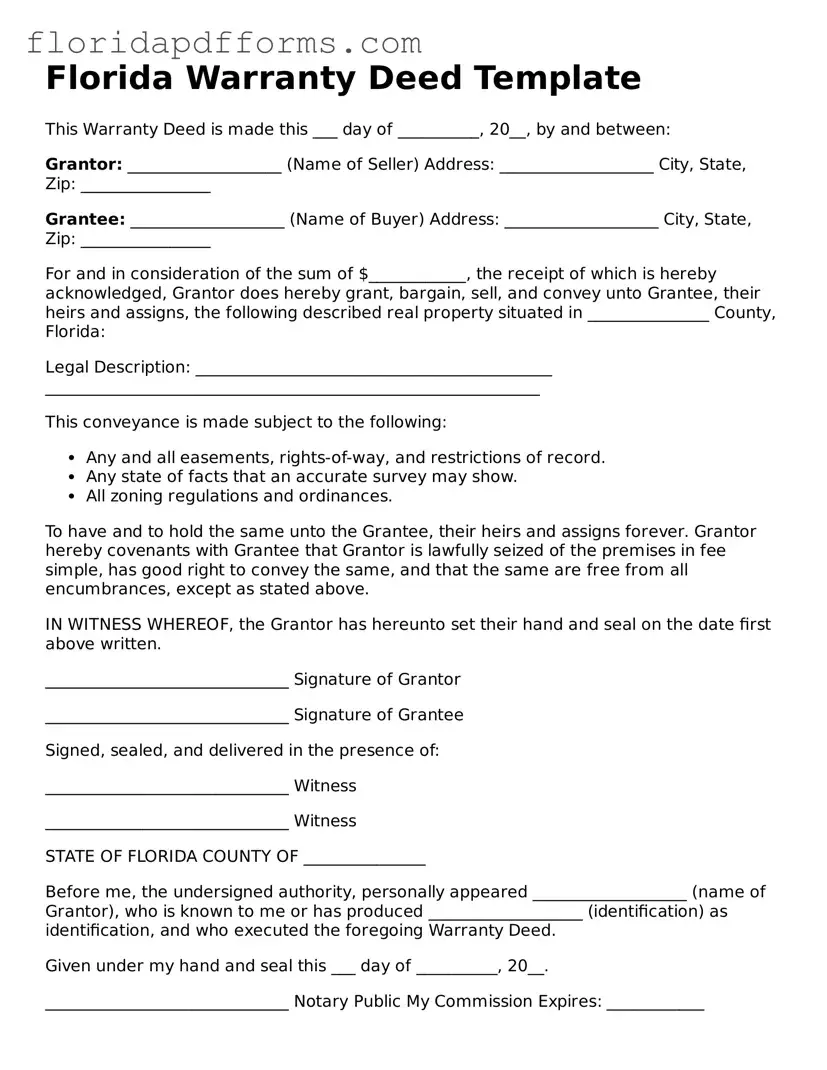Florida Warranty Deed Template
This Warranty Deed is made this ___ day of __________, 20__, by and between:
Grantor: ___________________ (Name of Seller)
Address: ___________________
City, State, Zip: ________________
Grantee: ___________________ (Name of Buyer)
Address: ___________________
City, State, Zip: ________________
For and in consideration of the sum of $____________, the receipt of which is hereby acknowledged, Grantor does hereby grant, bargain, sell, and convey unto Grantee, their heirs and assigns, the following described real property situated in _______________ County, Florida:
Legal Description: ____________________________________________
_____________________________________________________________
This conveyance is made subject to the following:
- Any and all easements, rights-of-way, and restrictions of record.
- Any state of facts that an accurate survey may show.
- All zoning regulations and ordinances.
To have and to hold the same unto the Grantee, their heirs and assigns forever. Grantor hereby covenants with Grantee that Grantor is lawfully seized of the premises in fee simple, has good right to convey the same, and that the same are free from all encumbrances, except as stated above.
IN WITNESS WHEREOF, the Grantor has hereunto set their hand and seal on the date first above written.
______________________________
Signature of Grantor
______________________________
Signature of Grantee
Signed, sealed, and delivered in the presence of:
______________________________
Witness
______________________________
Witness
STATE OF FLORIDA
COUNTY OF _______________
Before me, the undersigned authority, personally appeared ___________________ (name of Grantor), who is known to me or has produced ___________________ (identification) as identification, and who executed the foregoing Warranty Deed.
Given under my hand and seal this ___ day of __________, 20__.
______________________________
Notary Public
My Commission Expires: ____________
